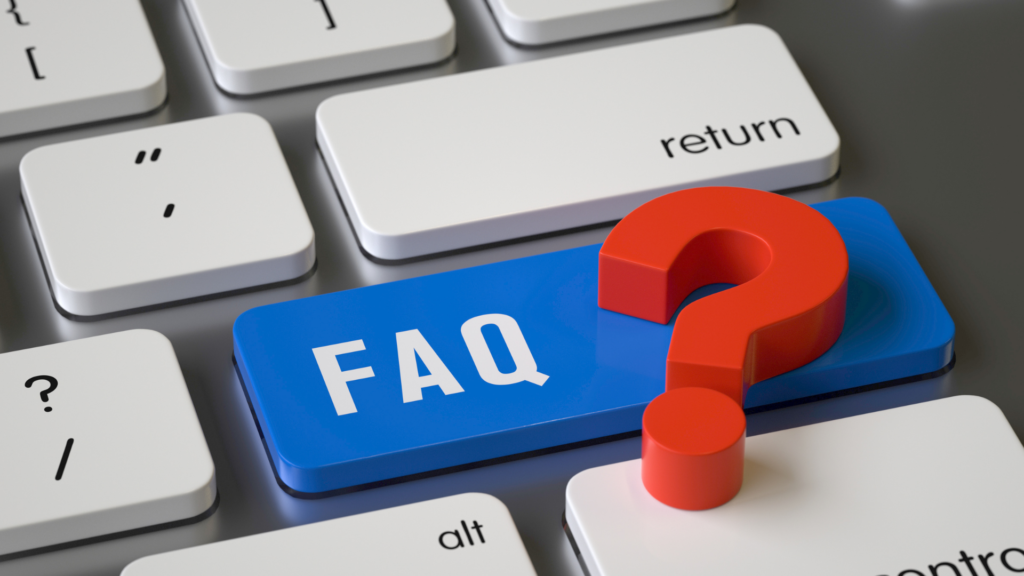Table of Contents
Exercise Daily – What Does Excess Postexercise Oxygen Consumption Represent?
At the end of a long car drive, what happens to your engine? It is not necessary to have a degree in automotive engineering to understand once you have arrived at your destination.
Your car’s engine will remain warm while it gradually cools to its resting temperature.
Here’s an interesting fact: Your body experiences the same phenomenon when you work out.
Similar to how a car’s engine continues to burn fuel after it turns off.
Once you complete an exercise, your body’s metabolism can continue to burn calories at a higher rate.
What is Excess Post Exercise Oxygen Consumption?

EPOC (excess post-exercise oxygen consumption) explains this physiological consequence.
EPOC, also known as oxygen debt, is the quantity of oxygen necessary to return your body to its normal. Moreover, resting level of metabolic activity after an exercise session (called homeostasis).
It also describes how your body may continue to burn calories even after you have completed your workout.
Your metabolism is the process by which your body transforms the foods you ingest in your diet into adenosine triphosphate. Which is the fuel that your body needs for muscle activity and energy production.
ATP generates either with oxygen, via the aerobic pathways, or without oxygen, through the anaerobic pathways, depending on the situation.
When you initially begin to exercise, your body fuels that activity by using anaerobic energy pathways and stored ATP.
It can take between five and eight minutes to be able to efficiently employ aerobic metabolism to create ATP. It is also critical to warm up properly before participating in any activity.
What Does Excess Postexercise Oxygen Consumption Represent?
Once you reach a steady-state level, the aerobic energy pathways are able to deliver the majority of the ATP.
An increase in demand on anaerobic energy pathways during exercise might result in a larger demand on aerobic energy pathways post-exercise, which can raise the requirement for oxygen, therefore amplifying the EPOC effect.
Listed below are seven things you should be aware of regarding EPOC and how it may assist you in achieving optimal amounts of calorie burn from your workouts:
Oxygen is Utilizes for the Following Functions During the Immediate Post-exercise Recovery Period
- Production of ATP in order to replenish the ATP depleted during the exercise session
- It is possible to regenerate glycogen in muscles from lactate.
- Oxygen levels in the venous blood, skeletal muscle blood, and myoglobin should come back to normal
- Protein aids in the regeneration of muscle tissue that has been damaged throughout the activity.
- Restore the body’s temperature to its resting state.
So, these are the functions for what does excess postexercise oxygen consumption represent?
Increased Oxygen Consumption and Caloric Burning During Exercise
To use one liter of oxygen, the body expends roughly 5 calories of energy (a calorie is the amount of energy necessary to raise one liter of water one degree centigrade in temperature).
To maximize net calorie burn during and after an exercise, increasing the quantity of oxygen absorbed during and after a workout is necessary.
Circuit Training and Heavy Resistance Training
Higher demand for ATP from the anaerobic pathways place on the participating muscles during strength training with complex, multijoint weightlifting exercises or by performing a weightlifting circuit that alternates between upper- and lower-body movements.
Because of the increased need for anaerobic ATP, there is a larger strain on the aerobic system to supply that ATP during rest intervals and the recovery phase following an exercise session.
Increasing the strain on the anaerobic energy pathways during exercises, such as through heavy training loads or shorter rest periods, results in a larger EPOC impact during the post-exercise recovery phase.
To Stimulate the EPOC Effect, High-Intensity Interval Training (HIIT) is Most Effective
However, at greater intensities and when your body requires energy immediately, anaerobic pathways can deliver the necessary ATP considerably more quickly than aerobic metabolism.
So, what does HIIT has to do with “what does excess postexercise oxygen consumption represent?”
This explains why we can only maintain high-intensity exercise for a short length of time before we exhaust our energy reserves.
HIIT works because ATP is created by the anaerobic pathways during high-intensity exercise; after that ATP has been used, it is required to allow for ATP to be replaced in order for it to be effective.
During an anaerobic workout, the active-recovery phase, also known as the rest interval, permits aerobic metabolism to create and replenish ATP in the muscles that are engaged.
A person’s oxygen deficit may be defined as the difference between the volume of oxygen consumed during exercise and the quantity of oxygen that would be consumed if all energy needs were fulfilled only through the aerobic energy route.
The Intensity of Exercise, Rather than the Duration, Influences EPOC.
Higher intensities need the production of ATP through anaerobic pathways. If the ATP required to do an exercise at a specific intensity is not produced by aerobic means, it must be obtained through anaerobic means.
During EPOC, the body makes use of oxygen to replenish muscle glycogen and repair muscle proteins that have been damaged during the exercise session.
Although the body will continue to use the aerobic energy route to replenish the ATP lost during a HIIT activity, the EPOC impact will be magnified as a result of the EPOC effect.
Resistance Training Can Provide A larger EPOC Impact than Running At A Constant Pace
The researchers conducted a review of “what does excess postexercise oxygen consumption represent?” and concluded:
“Studies, where similar estimated energy cost or exercising VO2 have been used to compare continuous aerobic exercise and intermittent resistance exercise, have indicated that resistance training produces a greater EPOC response.”
For example, one study discovered that when aerobic cycling (40 minutes at 80 percent maximum heart rate), circuit weight training (4 sets/8 exercises/15 reps at 50 percent 1-RM), and heavy resistance exercise (3 sets/8 exercises at 80-90 percent 1-RM to exhaustion) were all compared, heavy resistance exercise produced the greatest amount of EPOC (excess post-exercise oxygen consumption).
A HIIT or high-intensity strength-training workout with an EPOC effect can increase the overall energy expenditure during an exercise session by 6 to 15%, depending on the kind of activity.
High-intensity workouts use more energy from the anaerobic pathways and can cause a bigger EPOC effect, resulting in a longer period of time after the workout where the body burns more calories.
Heavyweight training and high-intensity interval training (HIIT) appears to be superior to steady-state jogging or lower-intensity circuit training when it comes to generating EPOC levels (LaForgia, Withers, and Gore, 2006).
How to Maximize the Effect of EPOC?

Since we know that “what does excess postexercise oxygen consumption represent?”
A few hours after a strenuous workout at the gym, you’re still hot and sweaty? Do you have a strong sense of vigor and alertness?
Exceeding post-exercise oxygen consumption (EPOC) is responsible for increasing your metabolic rate and causing you to burn more calories for several hours after your workout.
Have you ever thought about why anything operates the way it does?
There are a variety of strategies for increasing your “burn” in a given amount of time. When it comes to elite athletes, they can fine-tune their brains and bodies to the point of nearly utter fatigue in the last few minutes of a race or competition.
This, however, requires years of instruction and experience. Fortunately, there are workout techniques available for the rest of us, such as high-intensity interval training (HIIT).
Using brief bursts of hard activity followed by a short rest interval. You may also push yourself to your personal limits on a regular basis.
HIIT, like any exercise, requires the usage of muscles, and a lot of them. Muscle contractions generate the force that propels the body through each and every movement.
However, each contraction necessitates the expenditure of considerable energy.
The total quantity of energy required to maintain physical movement varies according to the amount of resistance (weights) used, the number of repetitions (muscle contractions) performed, and the length of time spent exercising.
After a detailed discussion of “what does excess postexercise oxygen consumption represent?”, take a look at how to maximize it.
Consequently, it is beneficial to understand what your muscles are doing when you go to the gym.
Stage 1
Creatine phosphate is a short-term explosive energy source that may be used to get muscles moving in the first place. This is present in extremely little quantities in your muscles, and as a result, it only lasts for a few brief seconds.
Stage 2
After that, you’ll need a source of energy that will last longer. The majority of this energy comes from the breakdown of glycogen, which serves as the body’s primary source of carbohydrate energy.
Glycogen begins by releasing some energy without the need for oxygen, resulting in the production of lactic acid. Again, this will only provide nourishment for your muscles for a short period of time.
Stage 3
Long-term energy necessitates the use of oxygen. An even slight reduction in blood oxygen levels sets off a cascade of reactions that cause you to breathe more heavily and your heart to beat more quickly.
When you start exercising, the fresh oxygen in your blood rushes into your muscles, allowing you to begin creating energy through a process known as aerobic metabolism within the first few minutes of your session.
Although glycogen is still the primary fuel, you are now able to use oxygen to create water and carbon dioxide in addition to it (CO2). This permits you to continue exercising without producing any further lactic acid.
Does heart rate has anything to do with “what does excess postexercise oxygen consumption represent?”
As your heart rate increases, fat is released from the body’s fat reserves in a gradual and steady manner. After around 10 to 15 minutes, the release of fat reaches its maximum level. This fat circulates in the bloodstream and is absorbed by the muscles as it does so.
In order to maintain the energy required to keep the muscles contracting, both glycogen and fat are utilized as fuel sources in the muscles themselves.
Increase in Lactic Acid
Exercise that is both explosive and high-intensity generates a fast increase in lactic acid. Muscles begin to “burn” and fatigue at the same time as the heart rate rises.
When there is insufficient oxygen available, glycogen (and glucose) are broken down and converted to lactic acid.
It is a tiny molecule that is released from the muscles and is eventually turned back into glucose, then glycogen, by the liver once it has been transformed.
As a surprise, and contrary to long-held beliefs, it appears that lactic acid is not the cause of the muscle-burning feeling that occurs after intensive physical activity.
Lactic acid has even been found to be useful in allowing muscles to contract longer after being exhausted. Sporting scientists are still trying to figure out what is causing the burning feeling, which is a chemical reaction.
Boost Metabolism in Recovery Time
When you stop exercising, the process of recuperation begins almost soon thereafter. You may have noticed that you sweat a lot and that you continue to sweat for several hours after you finish exercising.
So, what exactly is the relationship between metabolism and “what does excess postexercise oxygen consumption represent?”
Exercise and sweating keep you cool as your muscles, liver, heart, and immune system begin the complicated and energy-demanding process of recovery.
Excess post-exercise oxygen consumption (EPOC) is a metabolic increase that occurs over a sustained period of time after exercise.
Many of the healing mechanisms take advantage of the additional energy. One of the most important requirements is to eliminate the majority of the lactic acid (as a chemical by-product, it needs to be clear and converted into a useful energy source).
Because the synthesis pathway for turning lactate back into glucose (and ultimately glycogen) is energy-intensive, the liver performs a crucial job in this process.
Muscles require a simultaneous healing and adaptation process. Protein breakdown and synthesis are also necessary for this. The effort is required for this once again.
Nerves must produce new neurotransmitters, and the hormones that are released during exercise must be synthesized from scratch. It is a time-consuming and energy-intensive procedure.
Amount of Energy and EPOC
A direct link between the quantity of energy expended during an exercise session and the amount of EPOC produced throughout the session.
So, does HIIT has anything to do with “what does excess postexercise oxygen consumption represent?”. Let’s find out.
Going hard in a HIIT workout will result in higher EPOC than going gently in the same session.
If you train your entire body, you will be able to cycle through many of the key muscle groups. Moreover, leaving each one in need of recuperation and EPOC after each session.
It is typically possible to test EPOC for a period of up to three hours. The actual number of calories expended during recovery expressed as a proportion of the overall amount of energy used during an exercise session has been the topic of much investigation.
The general consensus appears to be somewhere between six and fifteen percent. But it may be greater for exceptional athletes who engage in severe physical exercise.
It seems doubtful that EPOC is the only positive after-effect of exercise, and the metabolic advantages of high-intensity interval training (HIIT) are largely understudied.
More research will determine why HIIT appears to burn more fat than other kinds of exercise.
Furthermore, EPOC varies between individuals. While scientists are unable to explain the causes for this variance at this time. Although fitness, fatness, or gender may not influence it either.
Maximize Your EPOC

In the same way that a good workout technique may increase performance, an effective recuperation technique can maximize the advantages of training. Hydration and nutrition are essential components of a successful recovery.
Maintaining sufficient hydration is critical to accelerating the elimination of lactic acid from the body.
Moreover, it allows glycogen reserves to replenish. It is essential that high-quality carbs and proteins are present in all recovery meals.
It’s important to get some rest after all of this. A long, peaceful sleep may do wonders for your muscles, allowing them to recuperate for another day of high energy.
If you’re experiencing muscular pain after a workout, there are several easy strategies that might help you get through it.
And keep in mind that EPOC is one of the most crucial stages of recovery. So, be realistic about your expectations.
It is a great benefit, but it does not guarantee that your midriff will miraculously grow abs. Or that you will be able to indulge in a chocolate bar without feeling guilty.
Importance of EPOC Effect is A Debate
The importance of the EPOC effect for the typical exercise participant is debatable. To be sure, because the high-intensity activity necessary for EPOC might be exceedingly difficult for some people to complete.
But if you want to see results and are willing to take on a challenge, increasing the intensity of your exercises by utilizing heavier weights, shorter rest intervals, or high-intensity cardio intervals may be worth your time and energy.
Remember that while high-intensity interval training (HIIT) or heavy resistance training is useful and helpful.
You should give at least 48 hours of rest periods between high-intensity exercise sessions. Moreover, you should restrict your tough workouts to no more than three per week.
If you decide to increase the intensity of your exercises in order to increase EPOC, try including these recovery methods into your routine.
FAQs Relating To Excess Postexercise Oxygen Consumption

During Muscle Contraction, Myosin Cross Bridges Attach To Which Active Sites?
During muscle contraction, myosin cross-bridges attach to actin filaments. Myofilaments intertwine with one another and glide over one another within the sarcomere actin and myosin. It also means the sliding filament model of contractility.
What Is the Functional Role of the T Tubules?
Transfer tubules are extensions of the cell membrane that reach deep inside skeletal and cardiac muscle cells.
T-tubules enable cardiac muscle cells to contract more strongly by synchronizing calcium release across the cell. Your muscles achieve this through several processes.
What Is EPOC?
After engaging in vigorous activity, excess post-exercise oxygen consumption is a measurable increase in the rate of oxygen intake.
Which Muscle Cells Have the Greatest Ability To Regenerate Quizlet?
Smooth muscle cells have the highest ability to regenerate of all the different types of muscle cells. The smooth muscle cells themselves maintain the capacity to proliferate. As a result, their numbers might grow a result of this.
What Is A Good EPOC Number?
If you engage in a moderate to intense workout, you will experience an EPOC response. It may last anywhere from two to ten hours.
However, it is not considerable; it may be anywhere from 150 to 200 calories throughout the course of that period.
How To Calculate EPOC?
Human heart rate at maximum capacity (HRmax), respiration rate at maximum capacity (RespR), percent VO2max at maximum capacity (percentage of maximal oxygen uptake), time (t), and the time interval between two sampling points (t).
What Is A Good EPOC Peak?
According to the data, EPOC can account for anything from 51 to 127 kilocalories of post-exercise energy expenditure.
(It calls as the “Peak Training Effect” or PTE) EPOC. EPOC measures the amount of additional oxygen required by the body during recuperating from the hard activity.
What Does Oxygen Deficit Represent?
When the body’s use of oxygen exceeds its intake of oxygen, an oxygen deficit occurs. Low oxygen levels in the blood or in the tissues as a result of an oxygen deficit can occur.
What Does Postexercise Oxygen Consumption Represent?
Quantity of oxygen required for completely aerobic muscle action compared to the amount of oxygen actually consumed.
What Does Excess Post Exercise Oxygen Consumption Represent Quizlet?
Exercise causes an increase in oxygen demand, which does not return to resting levels quickly.
Excess Postexercise Oxygen Consumption is the term that describes the excess oxygen consumed during recovery above and beyond a resting baseline (EPOC). EPOC also means “O2 debt.”






